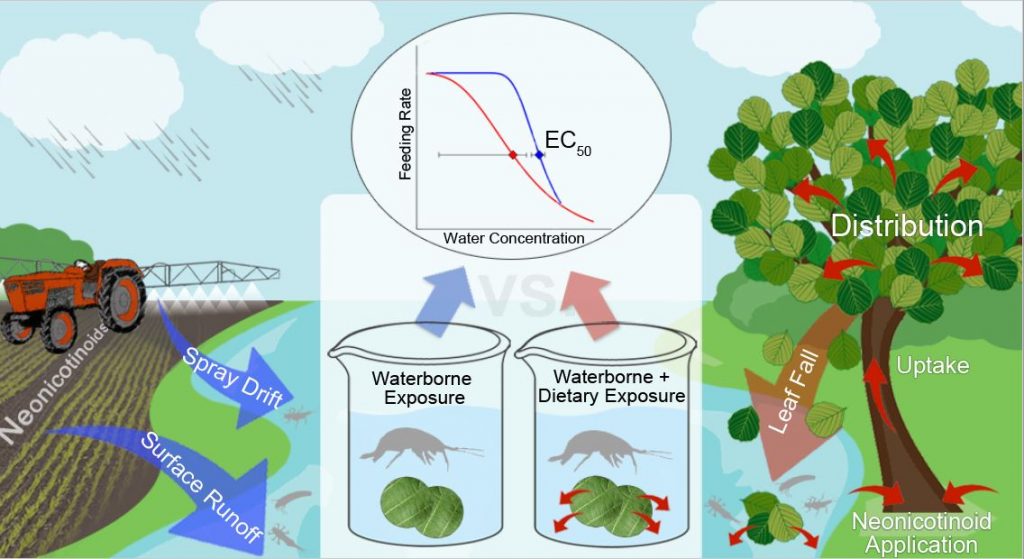In this post, Dominic Englert talks about their recently published paper “Does waterborne exposure explain effects caused by neonicotinoid-contaminated plant material in aquatic systems?“
In urban and forest areas, systemic neonicotinoid insecticides are increasingly applied to manage (invasive) insect pests infestation on trees. Following their application, the insecticides are taken up and distributed in these trees, resulting in plant tissues (e.g., leaves) that are toxic for pest insects feeding on it. As a consequence, however, the surrounding environment might be contaminated with neonicotinoids when deciduous trees lose their foliage, for instance during autumn leaf fall. If these neonicotinoid-contaminated leaves end up in nearby surface waters, the insecticides can be remobilized into the water via leaching, consequently exposing non-target aquatic life (see also our previous post). Moreover, particularly leaf-shredding invertebrates might additionally be exposed towards neonicotinoids via the consumption of contaminated leaves.
Therefore, our study investigated ecotoxicological differences between a waterborne exposure scenario and a scenario in which shredders were simultaneously exposed via both the consumption of contaminated leaves as well as via the water phase. In 7-day laboratory bioassays, the two model shredders – namely Gammarus fossarum (Amphipoda) and Chaetopteryx villosa (Trichoptera) – were subjected towards these scenarios either by applying the neonicotinoids (imidacloprid, thiacloprid and acetamiprid) directly into the water (waterborne scenario) or by providing leaves from trees treated with the same insecticides (combined scenario).
For both species, concentration-response models derived from the organisms’ feeding rate as well as neonicotinoid water concentrations indicated higher effects under the combined exposure scenario. Our results were further supplemented by food-selection experiments revealing the shredders’ inability to avoid neonicotinoid-contaminated leaves. The results of our experiments support the relevance of dietary exposure for systemic insecticides such as neonicotinoids. Therefore, accounting for this exposure pathway during the systemic insecticides’ registration would be a sensible step forward in safeguarding ecosystem integrity.
The paper was authored by Dominic Englert, Jochen P. Zubrod, Moritz Link, Saskia Mertins, Ralf Schulz and Mirco Bundschuh and published in Environmental Science and Technology.

